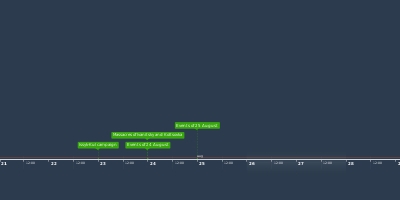Attack on Suez (31 ene 1915 año – 2 feb 1915 año)
Descripción:
From 31 January the British defenders expected an attack and by 1 February at least 2,500 infantry attackers were 6 miles (9.7 km) east of Serapeum with two guns, another force of 8,000 was at Moiya Harab 30 miles (48 km) to the south east and a third force of 3,000 was at Bir el Mahadat 10 miles (16 km) east north east of El Ferdan. In the rear of these forces were "considerable forces" at Bir el Abd 40 miles (64 km) from the Canal, at El Arish and at Nekhl.[41]The Ottoman Expeditionary Force, moving only at night, believed that it had been unnoticed, as scouts had observed British officers playing football, when Ottoman forces already established themselves in a camp 25 kilometres (16 mi) east of the Suez Canal.[42] Kress von Kressenstein's Suez Expeditionary Force arrived at the Canal on 2 February 1915 and the Ottomans succeeded in crossing the Suez Canal about Ismailia on the morning of 3 February 1915.[34][43]
By 2 February slight forward movements of the attacking force made it clear the main attack would be on the central sector, to the north or south of Lake Timsah and the armoured train with four platoons of New Zealand infantry and two platoons reinforced the 5th Gurkhas post on the east bank.[44] The 22nd (Lucknow) Brigade (the 62nd and 92nd Punjabis and the 2/10th Gurkha Rifles) from Sector II, the 2nd Queen Victoria's Own Rajput Light Infantry, and two platoons of the 128th Pioneers from general reserve at Moascar, the 19th Lancashire Battery RFA (four 15-pounders), 5th Battery Egyptian Artillery (four mountain guns and two Maxim guns), two sections of the 1st Field Company East Lancashire Royal Engineers and the 137th Indian Field Ambulance were in position between the Great Bitter Lake and Lake Timsah.
Añadido al timeline:
fecha:
31 ene 1915 año
2 feb 1915 año
~ 2 days
